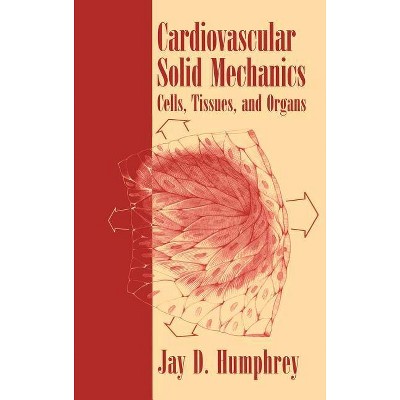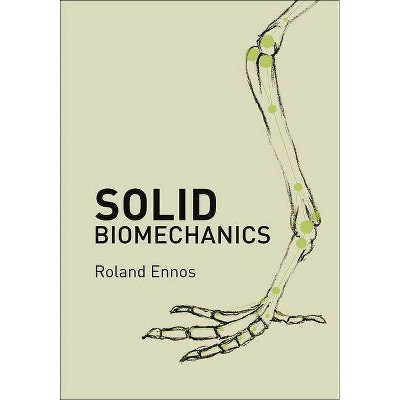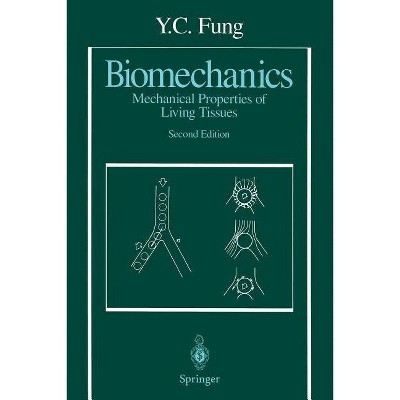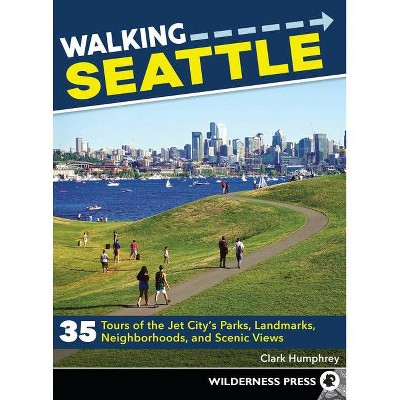An Introduction to Biomechanics - 2nd Edition by Jay D Humphrey & Sherry L O'Rourke (Hardcover)
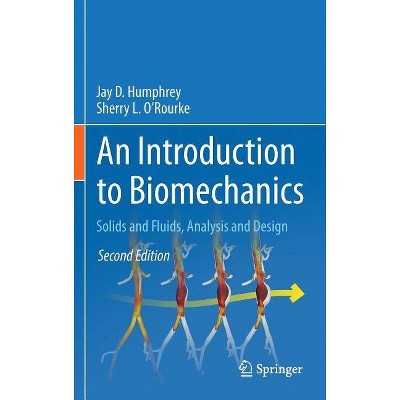
Similar Products
Products of same category from the store
AllProduct info
<p/><br></br><p><b> Book Synopsis </b></p></br></br><p>1 Introduction.- 2 Stress, Strain, and Constitutive Relations.- 3 Equilibrium, Universal Solutions, and Inflation.- 4 Extension and Torsion.- 5 Beam Bending and Column Buckling.- 6 Some Nonlinear Problems.- 7 Stress, Motion, and Constitutive Relations.-8 Fundamental Balance Relations.-9 Some Exact Solutions.-10 Control Volume and Semi-empirical Method.-11 Coupled Solid-fluid Problems.-12 Epilogue</p><p/><br></br><p><b> From the Back Cover </b></p></br></br><p>This textbook introduces the student to a consistent approach of formulating and solving problems involving the biomechanics of solids and fluids. Brief introductions are also provided for more complex situations that require methods of nonlinear elasticity, viscoelasticity, elastodynamics, or fluid-solid interactions. Concepts are motivated by concise descriptions of important biological, mechanical, and clinical observations and techniques. Over 300 figures are included, as well as complete derivations of the fundamental equations, solutions of over 80 example problems, and over 300 exercise problems.</p><p>Perfect for a one- or two-semester introduction to biomechanics, this Second Edition includes updated content in the form of new motivational observations, examples, appendices, exercises, and references. <i>An Introduction to Biomechanics, Second Edition</i> is an ideal book for undergraduate students with interests in bioengineering, biomedical engineering, or biomechanical engineering, and also serves as a valuable reference for graduate students, practicing engineers, and researchers.</p><p>This book also: </p><p>- Guides students in developing intuitive understanding via a consistent consideration of a variety of problems including cardiovascular, musculoskeletal, pulmonary, and cell mechanics </p><p>- Enco</p>urages students to develop a "big-picture" approach to problem-solving in biomechanics through new chapter summaries <p/><p></p><p>- Challenges students to solve problems under common conditions experienced in the laboratory or clinic</p><p/><br></br><p><b> About the Author </b></p></br></br><p><b>Jay D. Humphrey</b> is a John C. Malone Professor of Biomedical Engineering at Yale University. He received the Ph.D. degree in Engineering Science and Mechanics from The Georgia Institute of Technology and completed a post-doctoral fellowship in Cardiovascular Research at The Johns Hopkins University. He has authored a book titled Cardiovascular Solid Mechanics: Cells, Tissues, and Organs, co-authored a book titled Style and Ethics of Communication in Science and Engineering, co-edited a book titled Cardiovascular Soft Tissue Mechanics, and authored or co-authored chapters for over 20 other books or encyclopedias as well as over 200 archival technical papers. He served as founding co-Editor In Chief for the international journal Biomechanics and Modeling in Mechanobiology and has served as Associate Editor for five other technical journals. He is a Fellow of the American Society of Mechanical Engineers (Bioengineering Division) and the American Institute of Medical and Biological Engineers.</p><p><b>Sherry L. O'Rourke</b> is a Technical Field Engineer at Medtronic Inc. in the Cardiac Rhythm Disease Management Division. She received the B.S. and M.S. degrees in Biomedical Engineering from Texas A&M University and co-authored an archival paper on the biomechanics of the lens capsule of the eye, which is important in understanding device design for cataract surgery. Since graduation she has spent her professional life dedicated to designing, developing, and teaching programs to help physicians, residents, and nurses ensure that patients receive the maximum benefit from pacemakers and implantable defibrillators that are designed for those suffering from chronic heart disease.</p>
Price History
Price Archive shows prices from various stores, lets you see history and find the cheapest. There is no actual sale on the website. For all support, inquiry and suggestion messagescommunication@pricearchive.us
